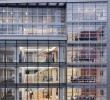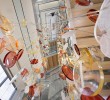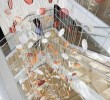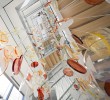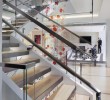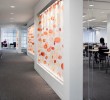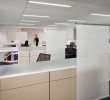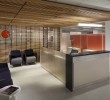Certified LEED Platinum: The American Society of Hematology Headquarters
Video
When the American Society of Hematology (ASH) was researching options for their new headquarters in 2008, they found a building in downtown Washington, DC, that offered the benefit of a central location combined with ample square footage. The structure required substantial reworking, however, to meet ASH’s various goals.
 Credit: © Paul Warchol
Credit: © Paul Warchol
Sustainability
Of the building’s total area of 100,000 sq. ft., the ASH headquarters occupies 40,000; in addition to office space and meeting rooms, the ASH facility includes a multi-media conference center, fitness area, and sub-grade garage. The remaining space is leased. Early in their research, ASH established the goal of earning LEED Platinum certification for the building – a goal that had already been deemed unlikely by the U.S. Green Building Council (USGBC) itself. In a speech delivered at the headquarters’ LEED award ceremony, USGBC COO Chris Smith stated that he and Rick Fedrizzi, President and Founding Chair of the USGBC, had looked at that building before eventually signing the lease for their own new headquarters at 2101 L Street NW. Construction work that was being done on the building at the time caused Smith and Fedrizzi to think that achieving Platinum LEED certification was out of reach.
The finished building not only attained LEED Platinum certification (it is one of only seven LEED Platinum commercial office buildings in the District of Columbia), but it won this year’s NAIOP Maryland/DC Award of Excellence in the Best Sustainable Design LEED category.
Dennis Gaffney, Vice President of Interior Design and Architecture at RTKL Architects, says that in several areas the team gained a significant number of points:
The use of low-flow fixtures result in a 32% water reduction,
CO and CO2 are monitored,
Low-energy lighting and efficient heating/cooling result in an energy savings of 15%,
The majority of wood used is Forest Stewardship Council (FSC)-certified,
75% or more of the construction debris was diverted from landfills,
Over 20% of the building’s construction materials were locally sourced,
Over 20% of the building’s materials were manufactured with recycled materials,
70% of the occupants receive direct daylight, and
90% of the spaces have outside views.

ASH also invested in performance monitoring systems, according to Gaffney. By ensuring that the building’s systems are performing as designed, ASH intends to make sure that its new headquarters will truly earn its green credentials.
Reflecting the ASH Mission
RTKL designers interviewed the ASH staff as part of their "immersion" process and discovered that the ASH’s staff of 60 people actually serves an international membership of 15,000. “I felt it would be a missed opportunity if we didn’t represent that,” Gaffney says. Furthermore, ASH is a society composed of doctors, scientists, and other professionals whose specialty is blood, and one of the ASH team members pointed out that blood is central to any pursuit in the field of medicine. The question became how to express these points via architecture.
Complicating the program was the fact that the staff was going to be spread across four floors of office space, each needing to be 6,000 – 8,000 sq. ft. yet still needing to promote collaboration. Ultimately, both aesthetic and functional concerns were met with the introduction of a commanding central stairway. Lending the stairwell character and vitality is an art installation that was custom-designed by RTKL to signify the essence of the society. Composed of strands of fiber optic lighting that are strung with a multitude of colored acrylic discs (termed "rondelles"), it carries through all four floors of office space. Gaffney explains, “The stairwell creates connectivity, and the light sculpture represents two things, the large number of members and the symbolic characteristics of hematology: fluidity, movement, translucence, and connectivity. Because of budget constraints, we found a standard product, selected colors, and then extended the typical 8' lengths to 40'.”
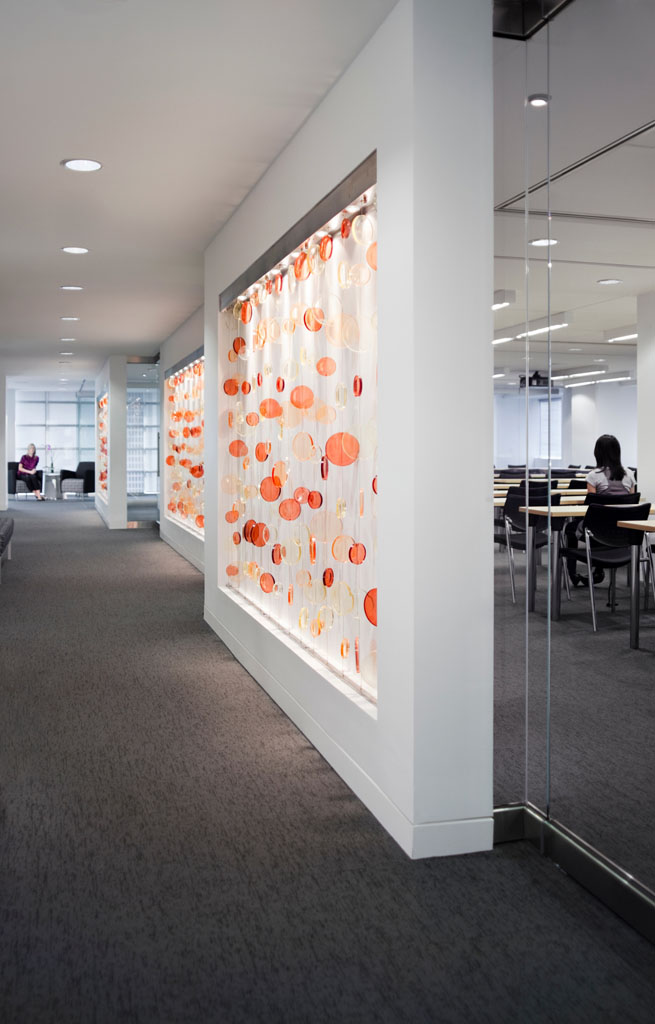
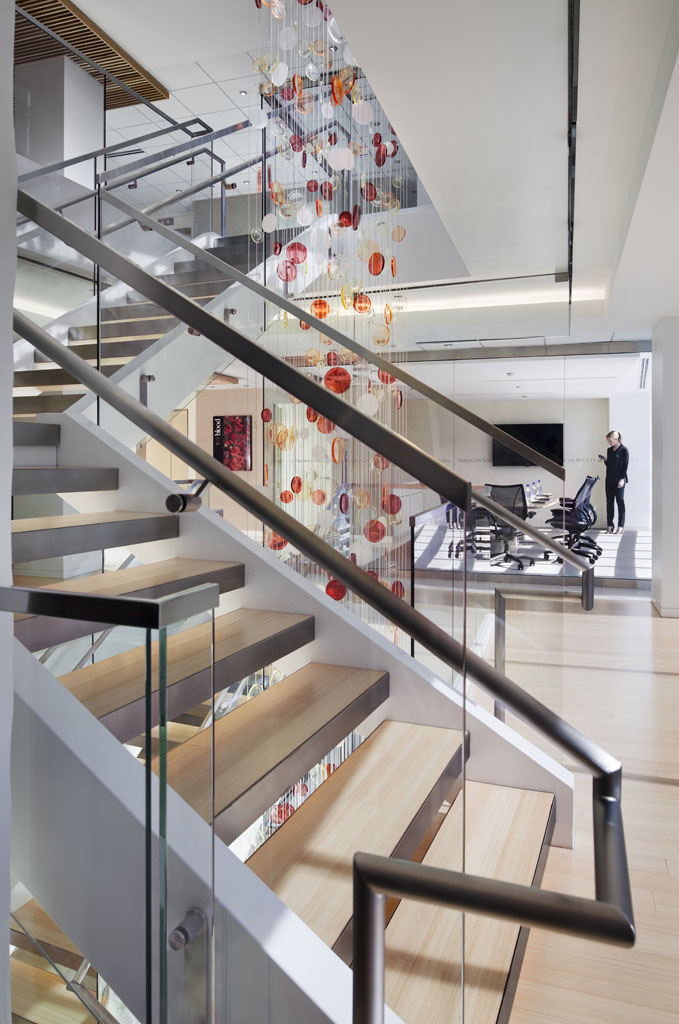
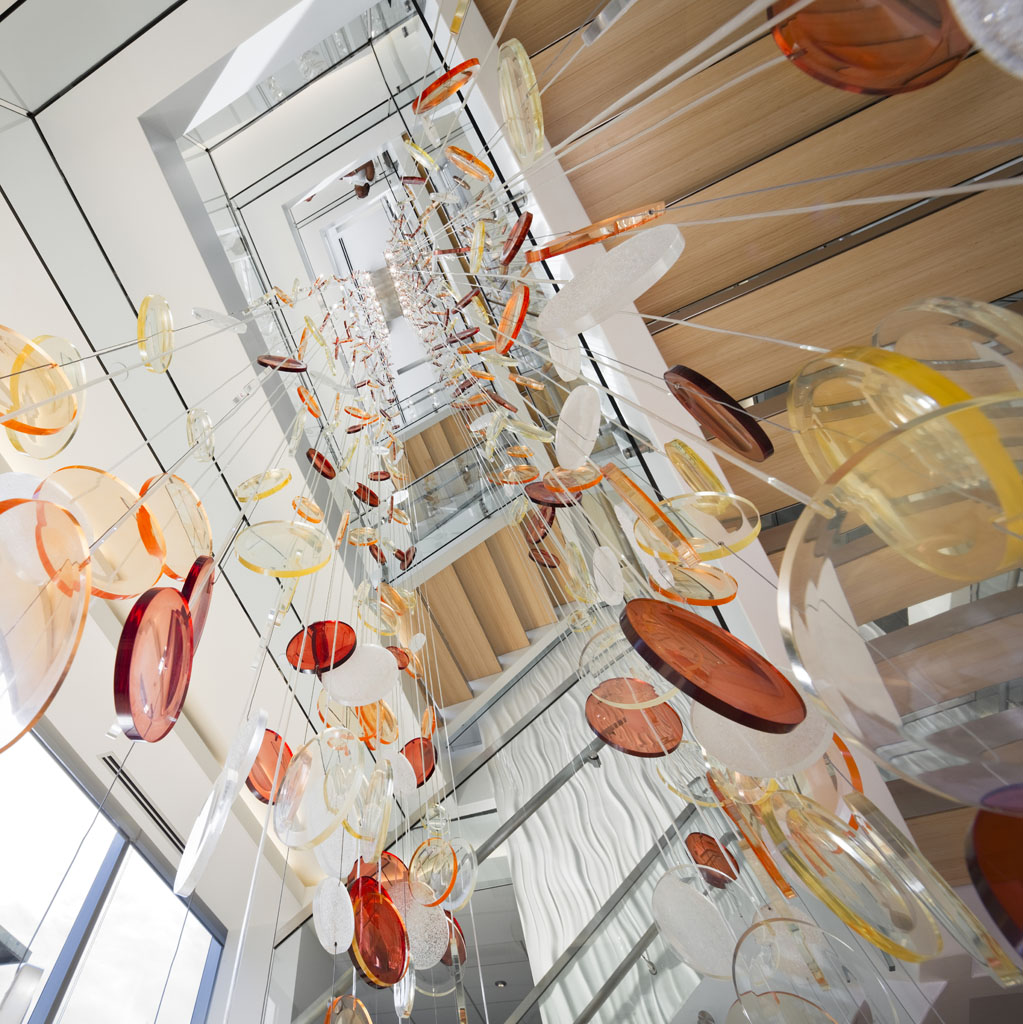
The stairwell light sculpture unites floors six through nine of the building -- the four levels of open plan space that house the ASH offices -- but the association also uses a fifth floor conference center to host visiting members. “Utilizing this space for activities such as hosting scientific discussions and coordinating the annual conference saves the society from having to rent hotel space,” explains Gaffney. The fifth floor is also potentially leasable space. To carry the sculptural theme through to this more isolated floor, the designers created lighted display cases that feature more strands of rondelles.
In achieving the seemingly impossible with its green goals, ASH has demonstrated that it knows how to be an agent of hope even beyond the boundaries of the medical field. Additionally, it leverages the power of art to visibly express the mission of the society.
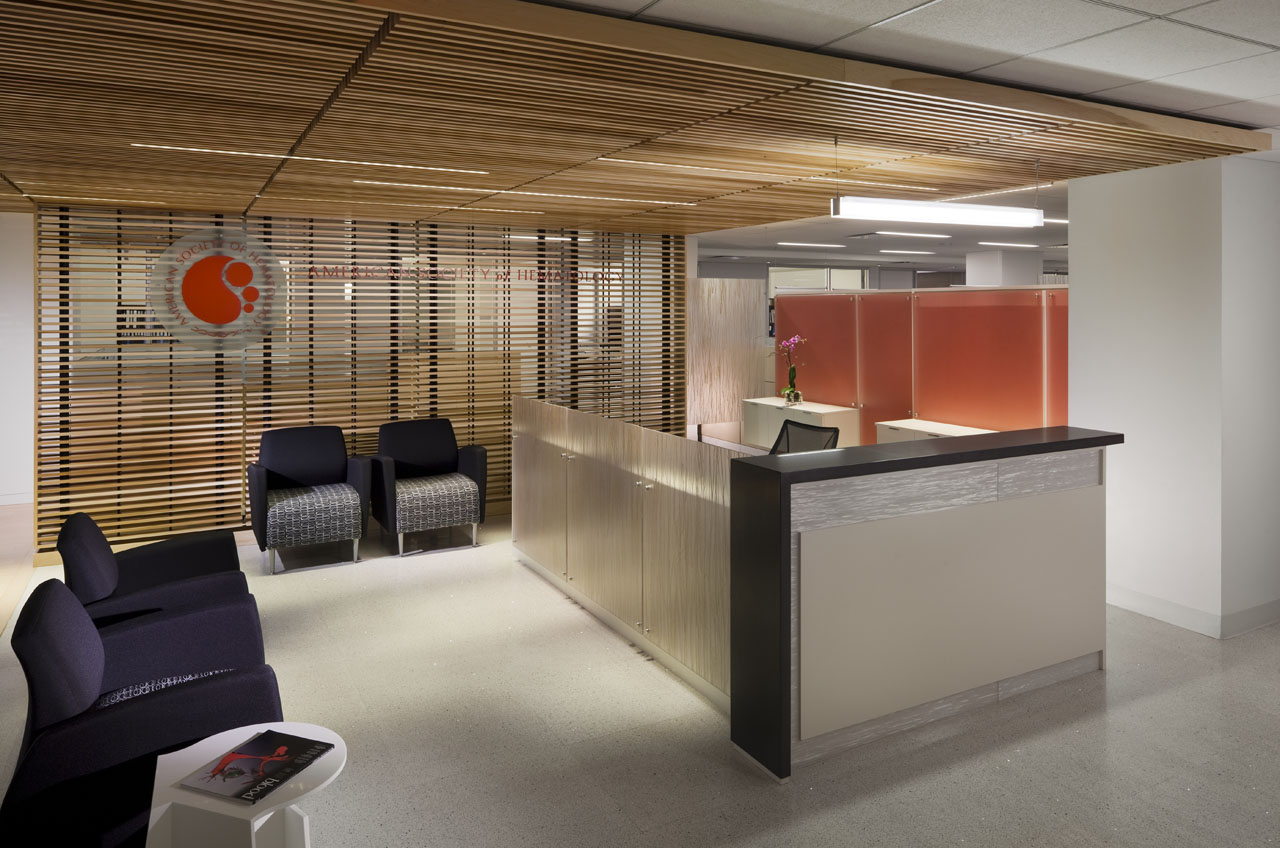

Kristin Dispenza
Kristin graduated from The Ohio State University in 1988 with a B.S. in architecture and a minor in English literature. Afterward, she moved to Seattle, Washington, and began to work as a freelance design journalist, having regular assignments with Seattle’s Daily Journal of Commerce.
After returning to Ohio in 1995, her freelance activities expanded to include writing for trade publications and websites, as well as other forms of electronic media. In 2011, Kristin became the managing editor for Buildipedia.com.
Kristin has been a features writer for Buildipedia.com since January 2010. Some of her articles include:


